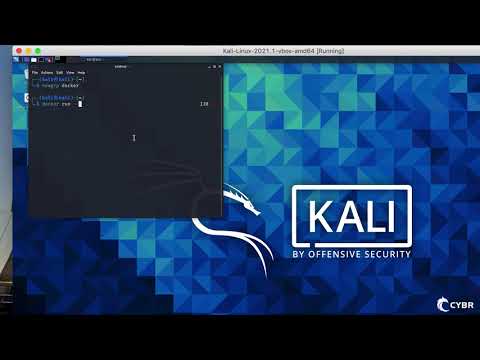


RUN echo "kali ALL=(ALL) NOPASSWD: ALL" > /etc/sudoersĬTRL + X and yes to save changes and exit. RUN adduser -disabled-password -gecos '' -uid $USER_ID -gid $GROUP_ID kali If we just ran the image we built without using the Dockerfile intermediate step you end up having to chown any written file after the fact. Note: We do this so that during our build we create a new user called kali that has the same UID and GID as the host user to avoid permission problems when we write files to the bind mounted host volume from the container. Next, we'll create a Dockerfile using nano. Be aware that there may be application dependencies such as device-mapper-persistent-data, lvm2, yum-utils, and config manager repos that may need to be configuredįor Mac, Docker desktop is installed by copying the Docker.app to the Applications folder and double-clicking If using Ubuntu or CentOS as your host operating system please see specific guiding documentation for those platforms.

To start to install the appropriate version of docker that you’ll be using for the purposes of this post I’ll assume you’re using macOS or Windows so you can download and install Docker from

This means containers can consume far fewer resources than a virtual machine serving the same purpose. The difference between a container and a virtual machine is that the underlying hosts’ kernel is shared with containers whereas in virtual machines each machine has its own kernel. This post will show you how to significantly lessen this burden by using docker.Ī Docker container can also be used as a logical separator similar to a virtual machine. Kali, which is used by testing teams to validate security controls can be a heavy system burden as a VM. In this post, my aim is to demystify docker for container beginners and explore one practical use of Docker microservices via the use of Kali within a dockerized container on your local desktop/laptop.


 0 kommentar(er)
0 kommentar(er)
